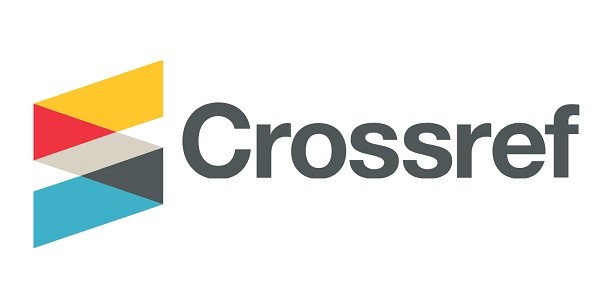DOI: 10.5937/jaes11-4604
This is an open access article distributed under the CC BY-NC-ND 4.0 terms and conditions.

Volume 11 article 265 pages: 201 - 208
In
the twentieth century electricity was produced and transmitted by and between
monopolistic public electric power companies. Over the last twenty years,
electricity markets have been deregulated allowing customers to choose from a
number of competing suppliers and producers. On one hand electricity market
participants try to fi rst satisfy their own country’s demand and, on the other
hand, to transmit electricity across borders into neighborhood markets.
Cross-border transmission is part of a competition where market participants
have non-discriminatory access to interconnected transmission lines. This paper
examines the problem of day-ahead planning at trading sections of electricity companies.
The underlying assumption is that the demand and supply are known in advance.
Available transmission capacities are also known as well as additional
transmission capacities that can be purchased. The prices and amounts of
trading and transmission are subjects of auctions. The problem of day-ahead
planning is here disscussed from the perspective of a decision maker of an energy
trading company (ETC). Decisions to be made are: where and how much electricity
should the ETC buy and sell, and which transmission capacity will be used in
order to maximize daily profit. The problem is formulated according to real-
life experience of a Serbian ETC which trades in Central and South-East Europe.
It is further modeled as a directed multiple-source and multiple-sink network and
then represented by linear programming (LP) mathematical model in which the
total daily profi t is maximized subject to market constraints and fl ow
capacities. The main goal of this model is to provide a useful tool for
preparing auction bids. Numerical examples are given in order to illustrate possible
applications of the model.
This research was partially supported by the Ministry of Education and Science, Republic of Serbia, Projects numbers TR32013 and TR35045.
Bazaraa, M. S., Jarvis, J. J., Sherali, H. D., (2010) Linear Programming and Network Flows, 4th ed, John Wiley & Sons, New Jersey
Daskalakis, G, Markellos, R. N., (2009) Are electricity risk premia affected by emission allowance prices? Evidence from the EEX, Nord Pool and Powernext. Energy Policy, 37(7), 2594–2604.
Fric, N., Gligic, B., Dobric, J., Markovic, Z., (2012) Wind towers - design of friction connections for asembling sections of tubular steel towers, Journal of Applied Engineering Science, (10)1, 49-52
Greenberg, M., (2009) Energy sources, public policy, and public preferences: Analysis of US national and site-specifi c data, Energy Policy, 37(8), 3242-3249
http://www.efet.org/Position_Papers/Electricity_Market,_Position_Papers,_European_Level_ 5492.aspx?urlID2r=72 . Accessed 15 December 2012
http://www.gnu.org/s/glpk/ . Accessed 17 January 2013
http://www.harcourt.ch/cms/hauptseite/zeigeBereich/11/gibDatei/1088/26-energypowertrading.pdf. Accessed 14 December 2012
Hsieh, C. C, Chen, Y. T., (2005) Resource allocation decisions under various demands and cost requirements in an unreliable flow network, Computers and Operations Research, 32(11), 2771–2784
Jovanovic,
B., Bozanic, V., Jovanovic, B. (2013) Education in the fi eld of energy effi
ciency in serbia-survey results and analysis”, Journal of Applied Engineering Science, (11)1, 15-22
Komarov, D., Stupar, S., Posteljnik, Z., (2011) Review of the current wind energy technologies and global market, Journal of Applied Engineering Science 9(4), 437-448
Kristiansen, T., (2007a) An assessment of the Danish–German cross-border auctions, Energy Policy, 35(6), 3369–3382
Kristiansen,
T., (2007b) Cross-border transmission capacity allocation mechanisms
in South East Europe, Energ Policy, 35(9), 4611–4622
Liu, M., Wu, F. F., (2007) Portfolio optimization in electricity markets, Electric Power Systems Research, 77(8), 1000–1009
Marchenko, O., (2007) Mathematical modelling of electricity market with renewable energy sources, Renewable Energy, 32(6), 976-990
Marinovic,
M., Stanojevic, M., Makajic-Nikolic, D., (2011) LP Model for Day-ahead
Planning in
Energy Trading. 11th International Symposium on Operations Research
- SOR’11, 75-80
Nowak, M. P., Schultz, R. D., Westphalenm M. A., (2005) Stochastic Integer Programming Model for Incorporating Day-Ahead Trading of Electricity into Hydro-Thermal Unit Commitment, Optimization and Engineering, 6(2), 163–176
Oggioni, G., Smeers, Y., (2009) Evaluating the impact of average cost based contracts on the industrial sector in the European emission trading scheme, Central European Journal of Operations Research, 17(2), 181-217
Purchala, K., Haesen, E., Meeus, L., Belmans, R., (2005) Zonal network model of European interconnected electricity network, CIGRE/IEEE PES, International Symposium New Orleans, 362 – 369
Quelhas,
A., Gil, E., McCalley, J. D., Ryan, S. M., (2007) A Multiperiod Generalized
Network Flow Model of the U.S. Integrated Energy System: Part I—Model Description, Power Systems, IEEE Transactions, 22(2), 829 – 836
Thery, R., Zarate, P., (2009) Energy planning: a multi-level and multicriteria decision making structure proposal, Central European Journal of Operations Research, 17(3), 265-274
Triki, C., Beraldi, P., Gross, G., (2005) Optimal capacity allocation in multi-auction electricity markets under uncertainty, Computers and Operations Research, 32(2), 201–217
Vijay, K., (2002) Auction theory, Academic Press, San Diego
Zachmann, G., (2008)
Electricity wholesale market prices in Europe: Convergence?, Energy Economics,
30(4), 1659–1671







